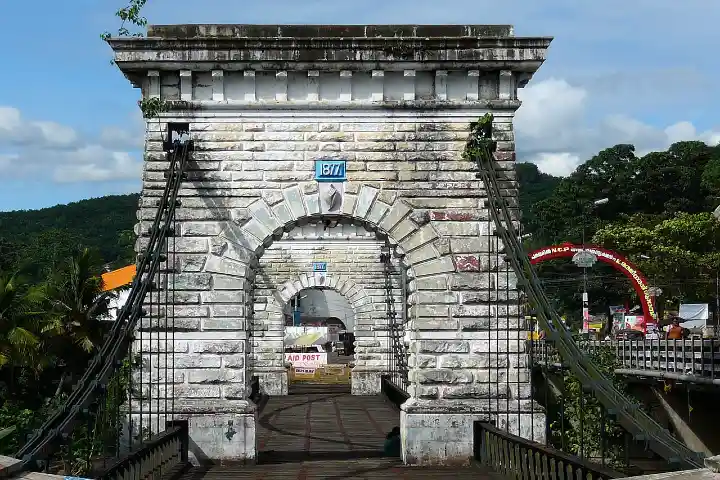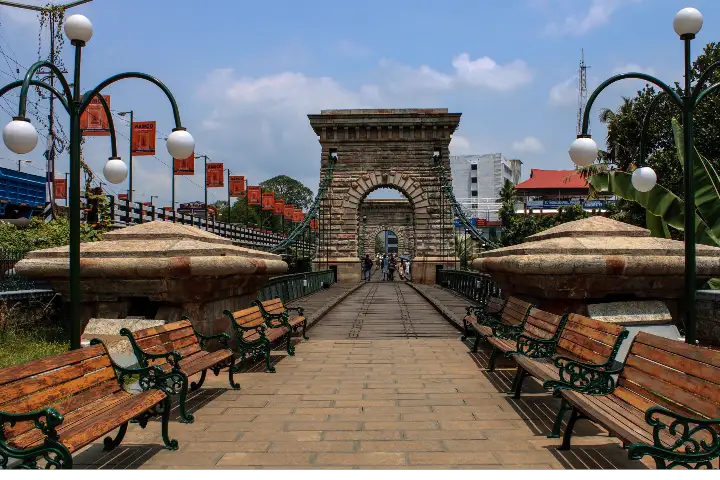Punalur may be a small town located in Kerala’s Kollam district yet it boasts of an architectural wonder – the 19th Century marvel called Punalur suspension bridge.
The 400-foot-long and 20-foot-wide bridge is the only one of its kind in South India built across the Kallada river, impressing the visitors with its massive, majestic and towering stone arches.
Aerial view of punalur suspension bridge. The bridge has a length of 400 feet (120 m). The suspension bridge was built to prevent wild animals from crossing into the town from the forest area of old Kattupathanapuram. pic.twitter.com/x8GUpU4Fih
— மேகமலைக்காதலன் ( A true lover of Megamalai ) (@MegamalaiS) October 8, 2022
The construction of this first motorable bridge in South India began in 1871 and was completed in 1877 was initiated by the Travancore King Ayil Ayiliyam Thirunal Rama Varma who ruled from 1860 to 1880. It was designed and supervised by the Scottish engineer Albert Henry.
At present movement of pedestrians is only allowed on the bridge.
Dr. S. Hemachandran, former Director of the Department of Archaeology commenting on the bridge said: “The heavy current in the Kallada river would not have supported an ordinary bridge. So the engineers executed the idea of a hanging one. It truly is an engineering wonder.”
Highlighting the importance of the bridge, Hemachandran added: “Punalur was the main trade route connecting Sengottai and Kollam. The bridge was formed initially to meet the trade needs and also to prevent wild animals from trespassing as the other side of the bridge was a dense forest.”
The base of the bridge is made from wooden planks placed over the iron bars and its sides are made of metals and the bridge is hanging on huge iron chains – each with 53 rings – with its one end connected to four huge discs attached to the four wells each of which are 100-feet-deep.

The bridge platforms are made of kambakam tree planks while its sides are crafted with metals. A forest tree, kambakam is not vulnerable to sun and rain.
The construction took 2,212 days and involved 250 labourers.
Interestingly on completion people were hesitant to use the bridge so the engineer and his family passed under the bridge in a country boat while six elephants were walking over it.
The rest as they say is history.














